#jaxa
Text

The surface of the asteroid Ryugu, as captured by the Japanese’s spacecraft Hayabusa2 (2018).
#asteroid#space#outer space#nasa#space photography#jaxa#Hyabusa2#ryugu#photography#nature photography#night sky#space exploration
172 notes
·
View notes
Text

Lunar farm concept from the Japan Aerospace Exploration Agency (JAXA), undated.
161 notes
·
View notes
Text
JAXAのH3ロケット2号機打ち上げライブの後に流れたエンドロールが最高すぎると話題に!
田中伸幸@tanakas.eth@name6less9
59 notes
·
View notes
Text
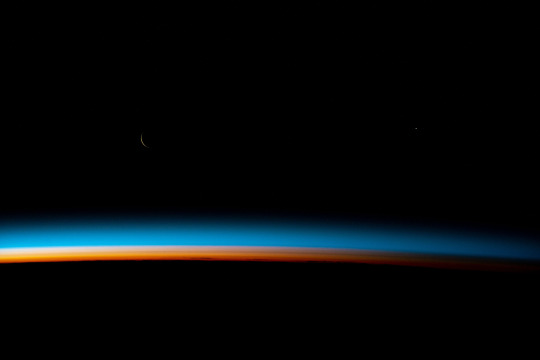
International Space Station: Moon and Venus sink into Earth's atmospheric layers (February 22, 2023)
#JAXA#ISS#Japan Aerospace Exploration Agency#International Space Station#earth from space#moon#venus#earthshine#atmosphere#astrophotography#astronomy#solar system#outer space
35 notes
·
View notes
Text
On 5 April 2008, the Japanese spacecraft Kaguya captured this full Earth-rise over the Moon limb in high resolution.
📹: JAXA
—
SELENE (Selenological and Engineering Explorer), better known in Japan by its nickname Kaguya, was the second Japanese lunar orbiter spacecraft following the Hiten probe.
Produced by the Institute of Space and Astronautical Science (ISAS) and the National Space Development Agency (NASDA), the spacecraft was launched on 14 September 2007.
After successfully orbiting the Moon for a year and eight months, the main orbiter was instructed to impact on the lunar surface near the crater Gill on 10 June 2009.
#Kaguya#JAXA#spacecraft#earth#moon#space#SELENE#Selenological and Engineering Explorer#lunar orbiter#Institute of Space and Astronautical Science#ISAS#National Space Development Agency#NASDA
115 notes
·
View notes
Text
Japan will make moon-exploration history in the middle of next month, if all goes to plan.
The Japan Aerospace Exploration Agency (JAXA) announced today (Dec. 5) that it's targeting Jan. 19 for the lunar landing of its robotic SLIM ("Smart Lander for Investigating Moon") spacecraft.
The newly revealed plan calls for SLIM to begin its descent toward the moon on Jan. 19 around 10 a.m. EST (1500 GMT; 12 a.m. on Jan. 20 Japanese Standard Time). Touchdown — which would mark the first-ever soft lunar landing for a Japanese spacecraft — is scheduled to occur about 20 minutes later.
The 8.8-foot-long (2.7 meters) SLIM probe launched atop a Japanese H-2A rocket along with an X-ray space telescope called XRISM on Sept. 6. XRISM deployed into low Earth orbit, but SLIM began making its circuitous, fuel-efficient way to the moon.
If all goes smoothly, SLIM will enter lunar orbit on Christmas Day, then spend nearly a month prepping for its technology-demonstrating touchdown attempt. Success would make Japan just the fifth nation to put a probe down on the moon, after the Soviet Union, the United States, China and India. This landing could also open doors for even more ambitious exploration feats down the road.
Conitnue Reading.
62 notes
·
View notes
Text

The good news is that on Jan 20, 2024, Japan's robotic moon lander touched down almost exactly where it was supposed to. The bad news is that it landed upsidedown.
Unfortunately, its solar panels aren't positioned correctly to generate power and Japan's Aerospace Exploration Agency hasn't figured out what to do about it yet.
Fortunately, two small rovers successfully separated from the crewless mothership just prior to touchdown (they were manufactured by the same toy company that created the Transformers). It was one of these baseball-sized robots that was able to snap the image of the spacecraft with its head in the moondust.
#moon#Japan#aerospace#space#exploration#astronomy#astrophotography#science#aesthetic#landscape#physics#landscapes#outer space#cosmos#JAXA#photography#funny#nature#NASA#beauty-funny-trippy#lander#upsidedown
45 notes
·
View notes
Text
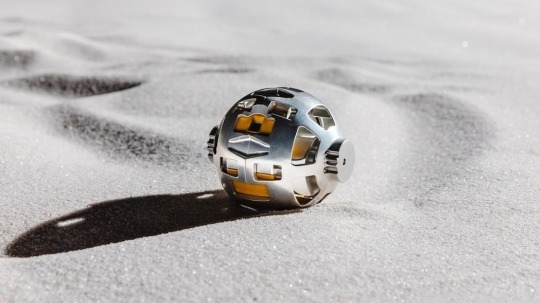
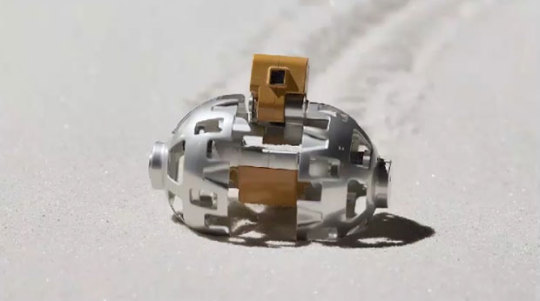

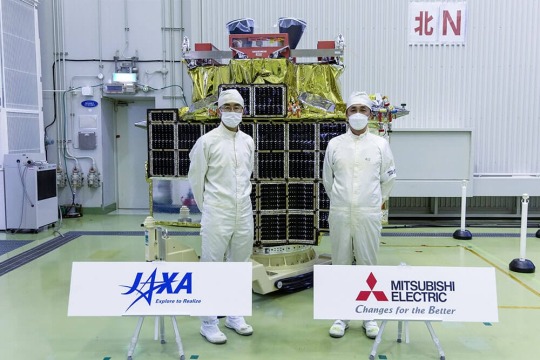
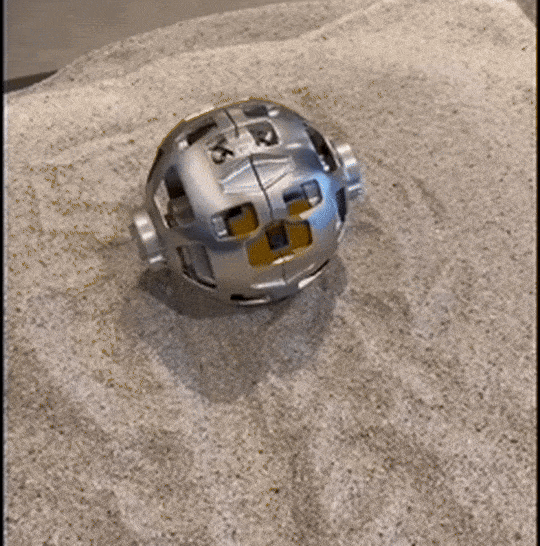
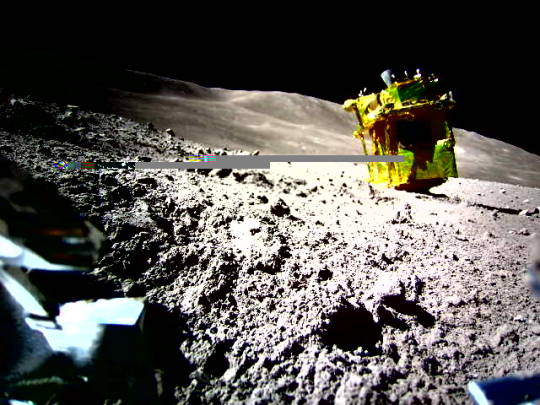
SLIM Lunar Excursion Vehicle 2 (LEV-2, AKA SORA-Q) by Tomy, JAXA, Sony Group, and Doshisha University (2023). The Smart Lander for Investigating the Moon, or SLIM (final photo), was launched from Japan on September 6 2023, due to make a precision lunar landing on January 19 2024. It will deploy LEV-2, an 8cm diameter, ball-shaped, transforming robot. Once on the surface of the moon, the robot splits, expands left and right, and a reaction trail pops out in a vehicular configuration. The wheels are mounted on an eccentric axle able to run in two modes, 'butterfly running' or 'crawling running'. The LEV-2 will be released from the lander 1.8 metres above the lunar surface, and begin rolling around to capture SLIM's landing and the surrounding area. LEV-2's battery is only expected to last about two hours.
"SORA-Q looks something like a metallic Wiffle ball and takes its name from sora, which means “sky” in Japanese; the “Q” is a homonym for the Japanese word meaning “sphere.” As the dust settles, SORA-Q will unfold like a Transformer: the sphere will split in half, exposing a pair of cameras and dividing its two hemispheres into wheels. In the case of M1, mission controllers will remotely instruct their SORA-Q to turn toward the main lunar lander and transmit images back to Earth." – A Mini Moon Rover from the Toy Company That Created Transformers, by Matt Alt, The New Yorker.
"We designed the vehicle to be a spherical object with expandable wheels and a stabilizer using the transforming technologies for toys. Moreover, we adopted the robust and safe design technology for children's toys, which reduced the number of components used in the vehicle as much as possible and increased its reliability." – Hirano Daichi, Palm-Sized Lunar Excursion Vehicle 2 (LEV-2).
In 2023, Tomy released a retail model, called the Sora-Q Flagship Model. It has the same transformer abilities, and can be remotely controlled with a smartphone app.
UPDATE: The Tomy LEV-2 / SORA-Q rover successfully returned this incredible image of the SLIM lander nose down on the Moon (final image).
53 notes
·
View notes
Photo
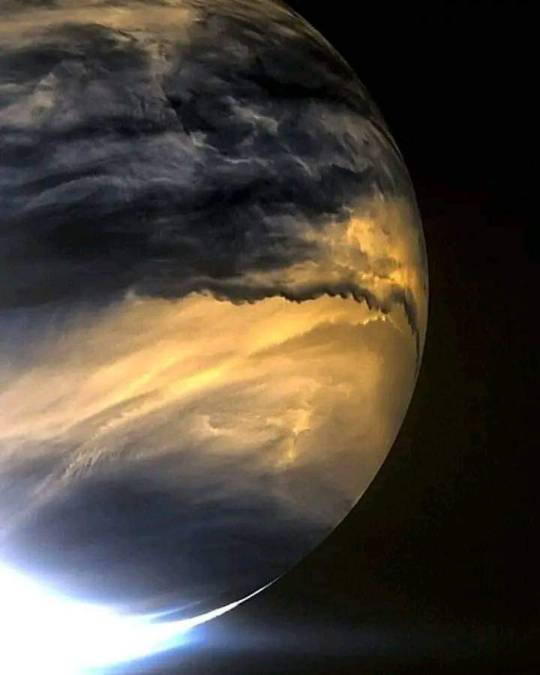
Clearest image ever taken of Venus.
Credit: JAXA
703 notes
·
View notes
Text
If there's one thing Lower Decks is good at, it's making me feel like a weak-ass Trek fan.
I know I am missing so many references in this show, and I've seen most of Trek (TOS is my one blind spot).
I was BARELY able to remember Locarno when they mentioned the failed flight maneuver. I had no idea who Sito Jaxa was until I started seeing posts here.
I can't feel too bad, though. I just have a crap memory.
#star trek#lower decks#star trek lower decks#star trek spoilers#lower decks spoilers#star trek lower decks spoilers#mariner#beckett mariner#Sito Jaxa#sito#jaxa
55 notes
·
View notes
Text
Venus Is Not Nekkid
aka what does Venus really look like?
Ok so you've probably seen pics of Venus like:

which is amazing 1990s radar data from NASA's Magellan spacecraft that discovered its surprisingly young, almost crater-free surface and fissures and lava flows and shield volcanoes:
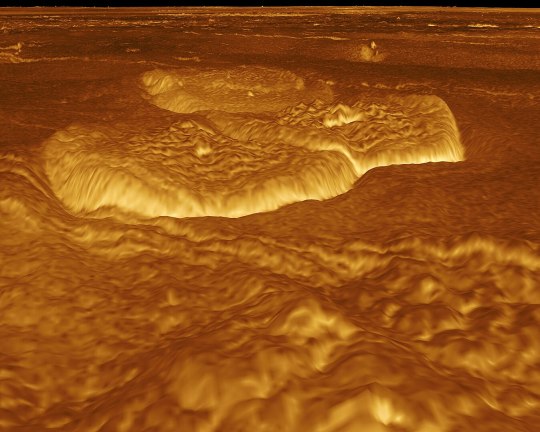
Which was a vast improvement, because apart from 6 photos of the surface by Russian landers asking "why me?", all we had before were grainy Mariner & Pioneer images from the 1970s showing Venus wrapped in featureless clouds in visible light or striped in ultraviolet:
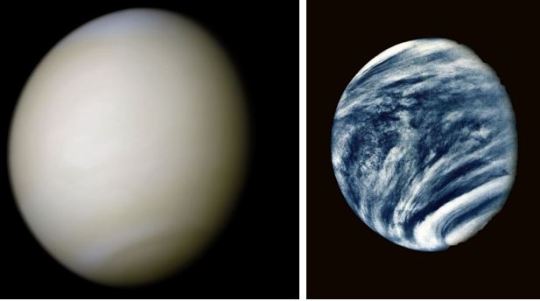
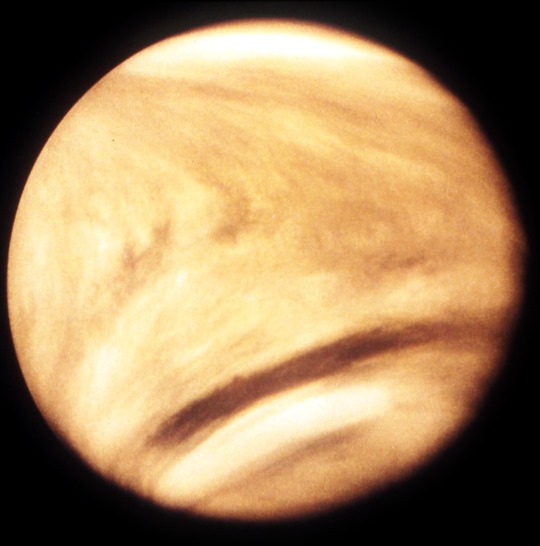
Magellan's radar peered through the clouds to reveal a surface less than 500,000 years old. Without plate tectonics to release heat, hotspots ooze continually, resurfacing the planet in a way that may resemble primitive Earth before plate tectonics.
More terrifyingly, Venus may have been habitable for billions of years until it had a massive flood lava catastrophe like the Earth at the end of the Permian, when 95% of life on our planet died. Except on Venus it was even worse, setting off a runaway greenhouse effect that boiled away the oceans.
Most solar system "family portraits" show Venus with Magellan's false-color radar data, naked, stripped of her thick blanket of clouds:
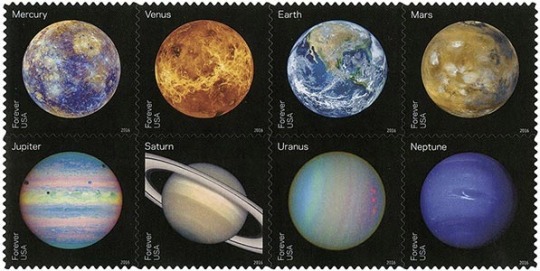
US "Views of Our Planets" stamps (Mercury also false color, Jupiter & Uranus UV I think)
But that's not how Venus looks through a backyard telescope. She's a shining white pearl, which was why the Greeks & Romans recognized her as Aphrodite/Venus.
In 2020, JPL engineer Kevin M Gill reconstructed a visible-spectrum portrait of Venus from old 1974 Mariner 10 probe data using UV and other odd wavelengths:
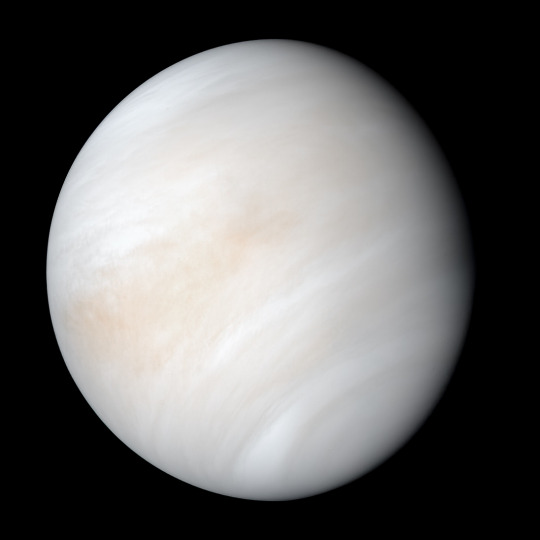
See this writeup on the image with a discussion of Venus' crazy clouds racing around the planet like a toxic hurricane.
A whole community of astronomers and image wizards has grown up hunting through old missions for data they can crunch and de-noise with data processing tools to create new, better images. Space agencies have taken note and now post data for them to play with.
So when 2015 Japan's dogged Akatsuki spacecraft finally made it to Venus after several mishaps, we got its first [UV images]:

Then they started posting raw data from all their instruments (UV and near-IR, because a white pearl is pretty but not as useful for science) and the image wizards went to work.
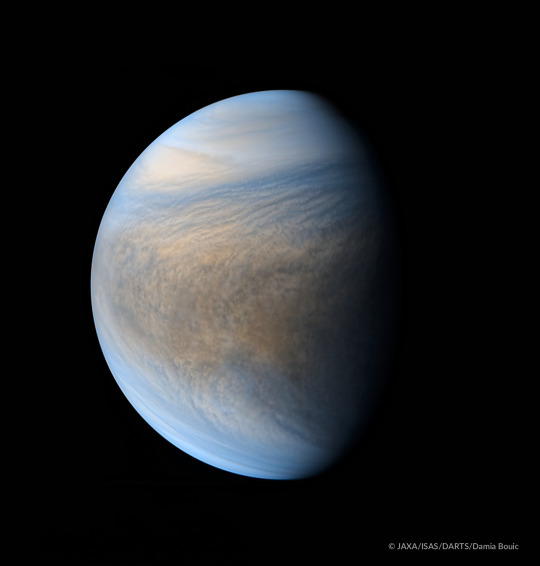
[two UV images combined by Damia Bouic]
Citizen scientist Damia Bouic has a whole blog post of gorgeous Venus images she's processed from Akatsuki data: Here's just a few. They're false color to bring out details, but I think (?) she's using the visible-spectrum colors of Venus for the color and the UV and/or IR data for saturation and brightness.
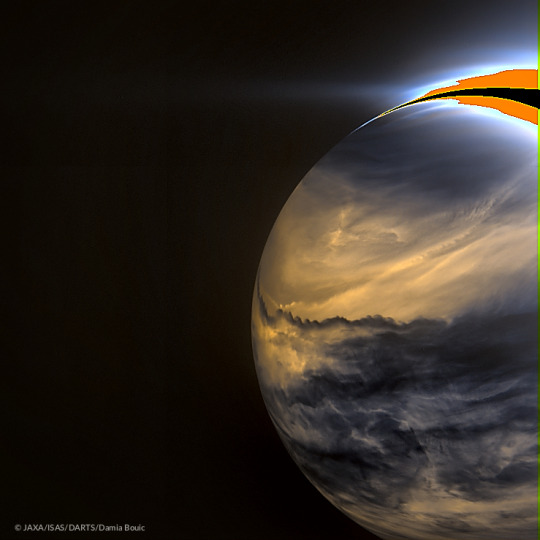
Venus' night side in infrared (detects heat). Check out that funky wave. clouds at the equator move the fastest, but I'm not sure what's causing that.
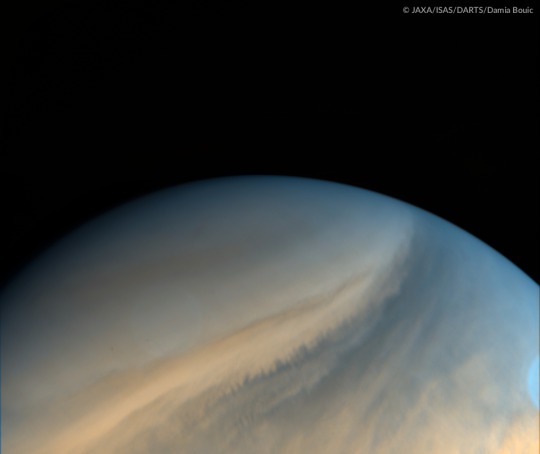
Another UV image processed by Damia Bouic
TL;DR: Venus is Beauty in visible light, the Beast on the surface, and I guess you'd call UV/IR views "I have a bad feeling about this."
130 notes
·
View notes
Text
Round 1

Blur's Self-Titled: Some bands make their debut with an eponymous album (Placebo did the year before, as would Albarn's second great success Gorillaz) but Blur knew that declaration of self-actualizion was worth saving. Blur by Blur is the fifth studio album by the acclaimed English pop-rock-alternative-shoegaze-anything that'll stick-band, fronted by 90s coverboy Damon Albarn. The album brought us the singles Beetlebum and Song 2, the former of which debuted at #1 on the UK charts, and the latter of which would properly break in the US and give the band the footing on American soil they'd previously missed. Woo-hoo! Despite its mainstream success (the album is certified Platinum) Blur has a distinctly more experimental sound than their Britpop classics and explores rougher indie production sentiments; guitarist Graham Coxon centers his widening musical tastes and produces some of his proudest work, while Albarn has stated that the track On Your Own may be regarded as the first taste of Gorillaz-before-Gorillaz. Although it would not be the end of the road for the band's internal turmoil and eventual reconciliation, it would come to represent an era of growth and emotional authenticity in their music.
NASA's Tropical Rainfall Measuring Mission: Do bring my hat, won't you? The Tropical Rainfall Measuring Mission was a joint space mission between NASA (US) and JAXA (Japan) designed to monitor and study tropical rainfall via satellite. The acronym TRMM refers to both the objective and the satellite itself, which made it to the stars in 1997. Understanding tropical precipitation is important for climate study and prediction as it contains three-fourths of the energy that drives atmospheric wind circulation; the trouble is, tropical precipitation was extremely difficult to track on the ground level with such large spatial variations. Prior to TRMM, the distribution of rainfall worldwide was known to only 50% certainty. Now it's up to, er, well-- NASA left that bit off the site. Note that it's unclear if the satellite was really such a brilliant gold for 17+ years in active orbit, but it makes a stylish rendering.
#blur#blur band#blur 1997#damon albarn#graham coxon#alex james#dave rowntree#gorillaz#nasa#jaxa#trmm#tropical rainfall measuring mission
35 notes
·
View notes
Text

JAXA's stream where they announced the collab. They said they'll have a collab poster and voice. More details soon
Looking foward to it!
39 notes
·
View notes
Text
society if i had the time or capabilities to write a fic where ro laren comes back to starfleet from wherever she was (i’m not there in tng yet) and slowly learns about the story of sito jaxa and pieces it together and just. gets insanely angry. as is her right.
#i dont have the time or the skill but IF I DID#theres a short fic i was just rec'd called#lamp for the dead#by pauraque#that is a 300 word version of it#but a longer version i mean. society if.#ro laren#jaxa#tng lb#sam's thots
34 notes
·
View notes
Text
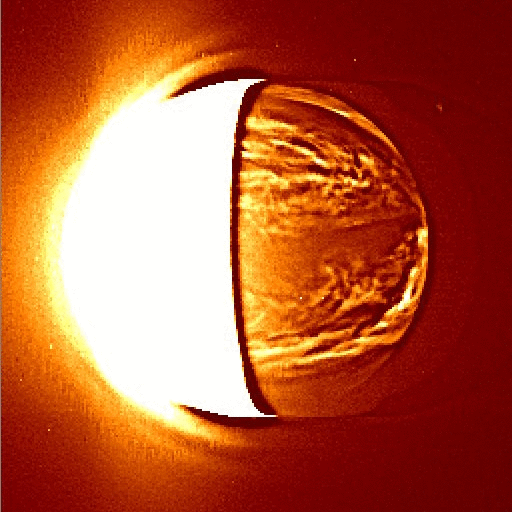
Akatsuki: Night side of Venus taken by the IR2 (March 29, 2016)
#akatsuki#jaxa#japan aerospace exploration agency#astronomy#astrophotography#solar system#outer space#venus#planet venus#space#krakenmare
35 notes
·
View notes
Text
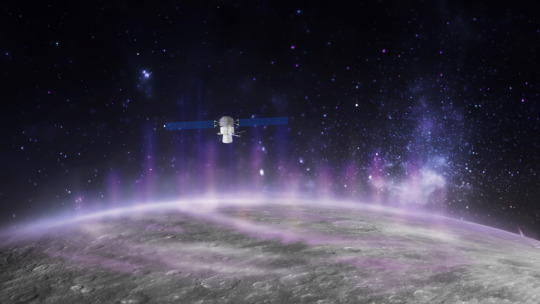
First BepiColombo flyby of Mercury finds electron rain triggers X-ray auroras
BepiColombo, the joint European Space Agency (ESA) and Japanese Aerospace Exploration Agency (JAXA) mission, has revealed how electrons raining down onto the surface of Mercury can trigger high-energy auroras.
The mission, which has been enroute to the Solar System’s innermost planet since 2018, successfully carried out its first Mercury flyby on 1 October 2021. An international team of researchers analysed data from three of BepiColombo’s instruments during the encounter. The outcomes of this study have been published today in the scientific journal, Nature Communications.
Terrestrial auroras are generated by interactions between the solar wind, a stream of charged particles emitted by the Sun, and an electrically charged upper layer of Earth’s atmosphere, called the ionosphere. As Mercury only has a very thin atmosphere, called an exosphere, its auroras are generated by the solar wind interacting directly with the planet’s surface.
The BepiColombo mission consists of two spacecraft, the Mercury Planetary Orbiter (MPO) led by ESA, and the Mercury Magnetospheric Orbiter (MMO, named Mio after launch) led by JAXA, which are currently in a docked configuration for the seven-year cruise to the final orbit. During its first Mercury flyby, Bepicolombo swooped just 200 kilometres above the planet's surface. The observations by plasma instruments onboard Mio enabled the first simultaneous observations of different kinds of charged particles from the solar wind in the vicinity of Mercury.
Lead author, Sae Aizawa, of the Institut de Recherche en Astrophysique et Planétologie (IRAP), now at JAXA's Institute of Space and Astronautical Science (ISAS) and University of Pisa, Italy, said: “For the first time, we have witnessed how electrons are accelerated in Mercury’s magnetosphere and precipitated onto the planet's surface. While Mercury’s magnetosphere is much smaller than Earth’s and has a different structure and dynamics, we have confirmation that the mechanism that generates aurorae is the same throughout the Solar System.”
During the flyby, BepiColombo approached Mercury from the night side of the northern hemisphere and made its closest approach near the morning side of the southern hemisphere. It observed the magnetosphere on the daytime side of the southern hemisphere, and then passed out of the magnetosphere back into the solar wind. Its instruments successfully observed the structure and the boundaries of the magnetosphere, including the magnetopause and bow shock. The data also showed that the magnetosphere was in an unusually compressed state, most likely due to high pressure conditions in the solar wind.
The acceleration of electrons appears to occur due to plasma processes in the dawn side of Mercury’s magnetosphere. The high energy electrons are transported from the tail region towards the planet, where they eventually rain down on the Mercury's surface. Unimpeded by an atmosphere, they interact with material on the surface and cause X-rays to be emitted, resulting in an auroral glow. Although auroras had been observed before at Mercury by the NASA MESSENGER mission, the processes triggering the X-ray fluorescence by the surface had not been well understood and witnessed directly to date.
36 notes
·
View notes